Warren Feeney – 14 February, 2014
There is a metaphor at work in The Day is a fume that argues that the physical world is capable of representing an infinite number of possible emotional and psychological states. The idea of ruin, damage and dislocation is reassessed through language that is intended to extend and open up new possibilities of understanding. Yet this is proposed from a position of privilege - in the order and calmness of the space of the gallery.
Christchurch
Dorota Broda, Gregory Kan, Tahi Moore, Juliet Carpenter & Evangeline Riddiford Graham.
The day is a fume
Curated by Elle Loui August
1 February - 2 March 2014
Where is The day is a fume seeking to position itself as an exhibition and why does that feel like an exasperating question to be asking? Is it intended to be a redeeming voice for democratic processes for people in Christchurch? This question is implicit in the text that accompanies the exhibition and fundamental to a consideration of Dorota Broda’s installation and Gregory Kan’s texts. Or is it re-evaluating the possibilities of Roland Barthes’ theory of language’s ability to extend understanding through multiple interpretations and readings of a subject? Certainly, curator Elle Loui August contends that the artists in The day is a fume perform ‘excavations and… speculative entanglements between language, materiality, and selves.’
Or course, it may be that the exhibition is simultaneously alluding to all the above possibilities, yet the four works that make up The day is a fume, frustratingly highlight a separation of intention between theory and object to suggest that this is not an entirely satisfactory basis for such a show.
The day is a fume feels like it wants to be something better than the sum of its fragmented parts. What do these consist of? It has more than its share of allusions to the state of Christchurch. August’s introduction states, ‘The centre of the city holds. It is a containment of the civic, the commercial, the social and the personal - narrative, rhetoric and memory.’ In his description of the notion of an ‘excess of repair’ (could that even be possible at present in the former garden city?) Gregory Kan’s A speaking platform made by heaping up seems to take up the challenge of such an introduction. His text is complemented by Dorota Broda’s Untitled, a skeleton tent frame that offers the ‘promise of a shelter’ It is an object that sits between construction site and work of art, and this seems apt - even if only because artists, art works and building crews are often currently sharing the same public spaces.
So there is a metaphor at work in The Day is a fume that argues that the physical world is capable of representing an infinite number of possible emotional and psychological states. The idea of ruin, damage and dislocation is reassessed through language that is intended to extend and open up new possibilities of understanding.
Yet this is proposed from a position of privilege - in the order and calmness of the space of the gallery. Kan’s A speaking platform made by heaping up does include some lovely phrases - ‘Shipping containers that prop up by weighing down,’ but his accompanying proposition of the ‘impossibility of returning to a previous whole,’ seems too grandly detached from its subject. This is a text that feels like it has found itself in the wrong space and time - even to the point of being isolated and displayed as a small book on a white plinth in the middle of the gallery. It emits an uncomfortable preciousness - an invitation to be publicly venerated, undermining the very idea of the deconstruction of the ‘privilege of the lyric address’ that the exhibition wishes to articulate.
When it does work, The day is a fume tends to direct attention back upon itself. Broda’s restrained and measured consideration of volume and form, for example, takes quiet command of the gallery space, and Tahi Moore’s film, Variance, time, problems etc, may be intended to work as a continually changing and evocative series of narratives, but it succeeds best in its moments of formalist certainty. Images and phrases act in a way that rightly anchor the work. Repeated phrases like ‘solutions outside problems’ and the reoccurring Vermeer-like beauty of Moore’s composition of interiors and furnishings all act as metaphors of assurance. The invitation to consider this work as a series of ‘speculative entanglement’ seems unnecessary.
Likewise, Juliet Carpenter and Evangeline Riddiford Graham’s Enlightenment Tissue possesses a welcome intimacy in its placement, leaning against the gallery wall, and it rewards the gallery visitor through large screen projections of reoccurring motifs of oblique, abstracted interiors and silhouetted figures. More importantly, it layers visual associations of colours and forms, sharing these with the space and patina of the gallery. If only its monologue was absent. In its first-person narrative, Enlightenment Tissue is all too authoritative, and without intending to, raises questions about the wider curatorial premise of the exhibition.
Without wishing to overstate a case for the potential richness of the direct experience of engagement with objects in the space of the gallery, The day is a fume, could have acted with a greater degree of resolution without the need for a consideration of Roland Barthes or late 20th century experimental poetics.
Warren Feeney

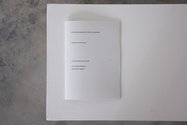
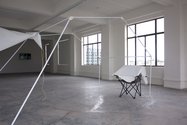
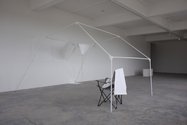
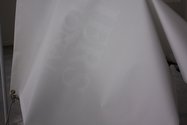
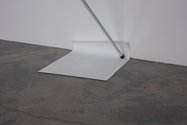

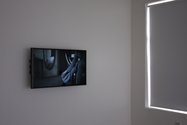
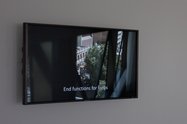
 Two Rooms presents a program of residencies and projects
Two Rooms presents a program of residencies and projects Advertising in this column
Advertising in this column

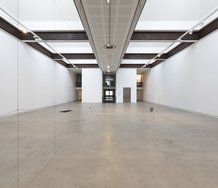
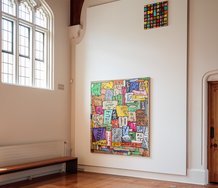
This Discussion has 0 comments.
Comment
Participate
Register to Participate.
Sign in
Sign in to an existing account.